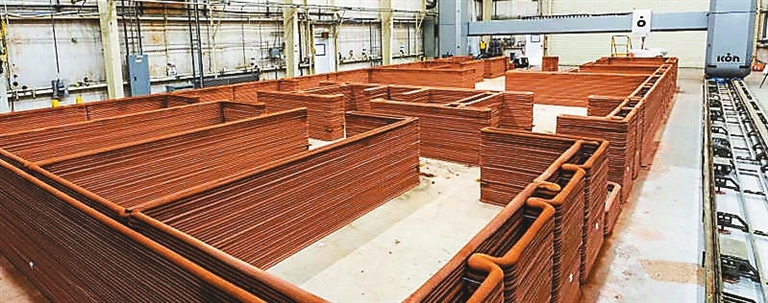
U.S. construction technology developer ICON is building a 3D-printed habitat, known as Mars Dune Alpha, at NASA’s Johnson Space Center to support NASA’s Crew Health and Performance Exploration Analog (CHAPEA). ICON’s next-gen Vulcan construction system will complete a 158-square-meter structure, designed by world-renowned architecture firm Bjarke Ingels Group (BIG), to simulate a realistic Mars habitat to support long-duration, exploration-class space missions. CHAPEA is a sequence of three one-year Mars surface mission simulations at the Johnson Space Center. Future space exploration habitats have the potential to be 3D printed with additive construction technology to eliminate the need to launch large quantities of building materials on multiple flights, which is cost prohibitive. Designed by BIG, the layout of the innovative structure is organized in a gradient of privacy. Four private crew quarters will be located on one end of the habitat; dedicated workstations, medical stations and food-growing stations are located on the opposite end, with shared living spaces found in between. Varying ceiling heights vertically segmented by an arching shell structure accentuate the unique experience of each area to avoid spatial monotony and crew member fatigue. A mix of fixed and movable furniture will allow crew members to reorganize the habitat according to their daily needs, as will the customizable lighting, temperature and sound control, helping regulate the daily routine, circadian rhythm and overall well being of the crew. ICON also received funding from NASA and launched Project Olympus to begin research and development of a space-based construction system to support future exploration of the moon. Known for its advanced 3D-printing technology for homebuilding, ICON delivered the first 3D-printed home in the United States in 2018. (SD-Agencies) | 
